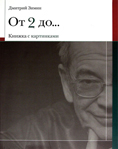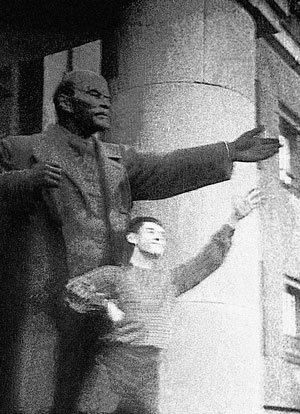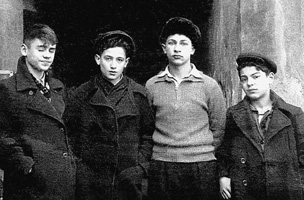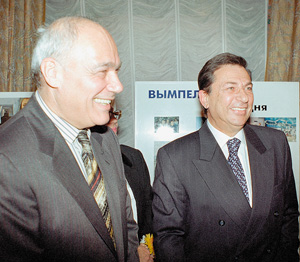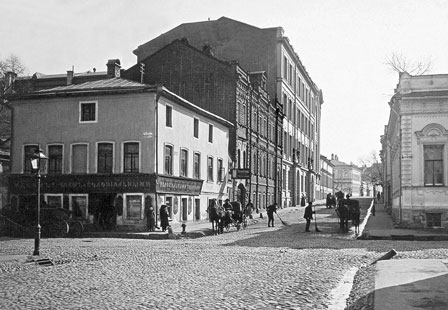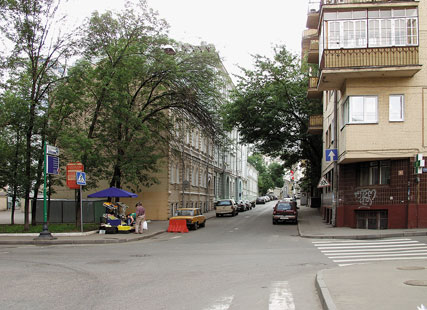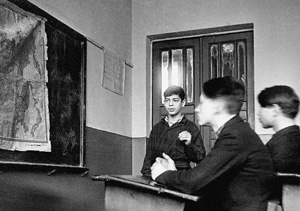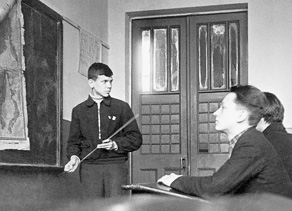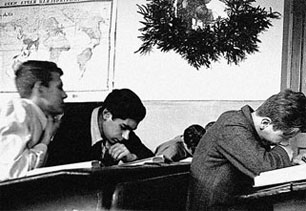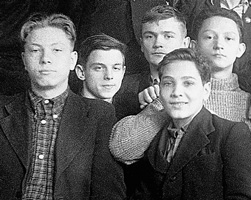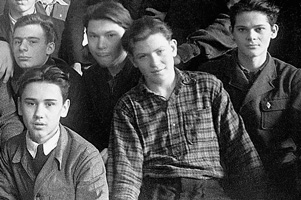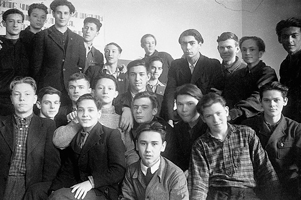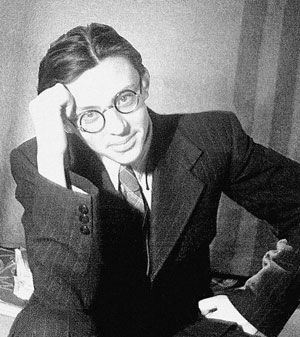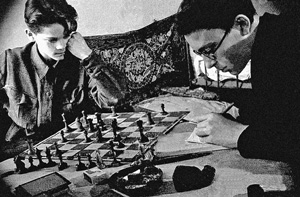|
|
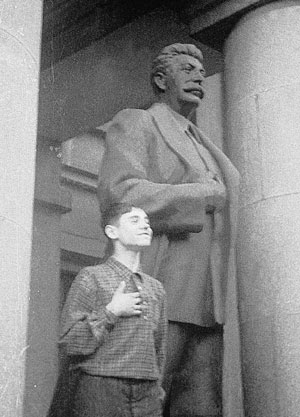 |
And, finally, the last couple of negatives never before printed and now almost disintegrated. Upon examining them against the light, I was gripped for a fraction of a second by a sense of dread.
This is one of the entrances to the Ministry of Defense, in present day Kolymazhnyi Pereulok. It is the building with the turret on the corner of Gogolevsky Boulevard. The busts of leaders were removed long ago, but their pedestals are still in plain sight. The year, it seems, is around 1947. Stalin’s regime is in full force. I am in 6th grade. The guy in the picture is probably a classmate, but could be just a courtyard buddy. For taking pictures like these both of our families could have been eliminated. It passed us by…
|
|
|
…And more than half a century later, on August 28, 2004, one of the main creators of the photo exhibit “Moscow Time," my long-ago college friend Geliy Pavlovich Zemtsov, engaged in an architectural photo shoot on this very spot. A military patrol suddenly ran out of the gatehouse and arrested him for “taking unauthorized pictures of the Ministry of Defense.” Geliy spent two hours under guard in their security room until the police showed up and took him away. They let him go eventually, keeping the film from one of his cameras, although the pictures in his digital cameras survived.
|
|
Our most famous classmate was Igor Kvasha. Here he is in 7th grade in pictures from 1948. I am presenting here all the photos of him that I could find in my archive. In the next picture, he’s the tallest guy; the shortest, next to him, is me.
|
|
|
Here’s another picture of him, taken more than fifty years later at one of the receptions by “VympelCom,” at which he and Vladimir Posner graced us with their presence.
After the 7th grade we parted ways. I, along with some other classmates, went to School № 59 in Starokoniushenny Pereulok, across from the Canadian Embassy; Igor went somewhere else.
|
|
Here are a couple of photographs of Starokoniushenny Pereulok taken from the corner with Sivtsev Vrazhek. The left one is from the turn of the 20th century; the right one is more recent, from 2004.
For those who do not know, the school is on the left side of the street, third house from the corner in the old photo. The left side of the street looked exactly like this in my childhood. But the pavement in Starokoniushenny used to be all cobblestones, and only Sivtsev Vrazhek was paved. And the building on the right corner was already the same as in the photo; I think it was built before the war.
|
|
The next bunch of photographs date from the years 1949 – 1951, when I was in 8th and 9th grades
at School № 59.
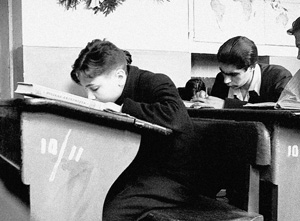
At the desk numbered 10/11, with his nose in a notebook, is our good friend Lyova Krichevsky. He had become a foundry engineer and for most of his adult life he worked as a foundry shop foreman somewhere at a Krasnaya Presnya plant.
By the way, in the lower left picture, next to the blackboard during Geography class is yours truly.
And in the next photo, Sargin is in front of a map. In another photo he is cheating, copying from Vaisman’s notebook.
|
|
|
I shared a desk in 8th grade with Zhenya Abelman. In this photo we are at my home, which I recognize by the exquisite background of the coverlet, and a strip of carpet behind it. Here I am playing chess with Zhenya Plaskeev. Both of them later in life became ranked international chess masters. Sorry about the quality of these pictures.
Incidentally, one of Zenya Abelamn’s ancestors – a participant in the Revolution – lent his name to the Abelman Army Barracks and the bridge over the Yauza. As for Zhenya, he turned into the well-known publicist, writer and translator Yevgeniy Khramov. This is not a nom de plume; he took his wife’s last name. Why it made sense to change the name Abelman to the name Khramov would be obvious to anyone who lived in the Soviet Union. By the way, Zhenya began the process of changing his name around the time that Nikita Sergeevich Khrushchev was promising the Soviet people that we’d get to see the advent of communism in our lifetime.
Zhenya was a year older than most of us. We entered school at the age of eight, but were dispersed when we evacuated during wartime in 1941. We met up again in 3rd grade at School № 61 in 1943, upon our return to Moscow. In many places in 1941, including Moscow, schools weren’t open and many kids had to begin their studies when they were nine.
|
|
|
|
|
